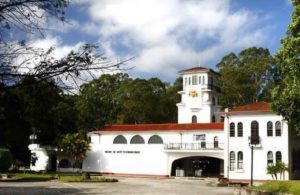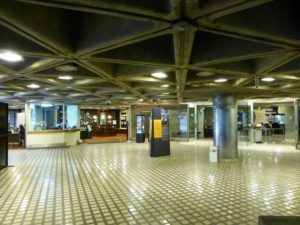If you like our beaches, rivers, and volcanoes, do not miss the opportunity to learn about our culture and art from this beautiful country. After spending time enjoying the different outdoor attractions in Costa Rica, you can further enhance your visit with a little culture. In the heart of La Sabana metropolitan park in the old facilities of San José airport. Visitors can explore the Costa Rican Art Museum and can be part of the artistic movements of this region of the past and the future. A visit to this museum can spice up your itinerary and that of your travel companions with something unique and fascinating.
The Museum is open every day, (except Mondays) from 9:00 a.m. to 4:00 p.m. Arriving at the museum is more convenient by bus or train. You can take the Sabana-Cementerio bus or the Sabana-Estadio route. By train, you must take the route that goes from San Pedro to Pavas. Your stop will be in front of the Comptroller General of the Republic in Sabana Norte. Students and children under 18 years old will have free admission. On Sundays, you can plan a visit a little cheaper since the entrance for adults is free.
The Costa Rican Art Museum (MAC).
As the entity in charge of preserving, rescuing, spreading and stimulating the Costa Rican visual arts in its diverse manifestations. To complete his actions, he has the program: the School House of the Artist, a valuable alternative for the training of talents.
The MAC leads the main activities related to the plastic arts of Costa Rica; gathers and exhibits works of national and international artists stimulate plastic confrontation and critical thinking and contributes to the comprehensive education of the public that visits it through educational and recreational programs.

The Museum also carries out extension programs through traveling exhibitions and exhibitions with international projection. These actions have allowed MAC to position itself in the Costa Rican environment and abroad with an up-to-date and contemporary vision.
Visiting the Costa Rican Art Museum is an enriching experience. You can discover works of great aesthetic and patrimonial value that reflect different periods and artistic movements that have left their mark on the Costa Rican art.
In addition, the building that houses the MAC is a work of art in itself, well worth admiring.
The Halls
The Costa Rican Art Museum has several exhibition spaces that allow the visitor to assemble their tour according to their interests and enjoy each corner of the Museum in a personal way.
Golden Hall

The Golden Hall, the former diplomat room of the country’s first international airport, is one of the artistic treasures of the Museum. Luis Féron Parizot (1901-1998), a French sculptor and goldsmith based in Costa Rica, was commissioned to create the mural that adorns the walls of the Salón Dorado. The 1940 work is a bas relief in stucco (based on plaster), carved and painted in bronze. In an area of 150 square meters, the mural synthesizes the history of Costa Rica from pre-Columbian times until the 1940s.
Garden of Sculptures
Exhibition rooms.
In the old terminal.
The central headquarters of the Costa Rican Art Museum is located a the old terminal the first International Airport: La Sabana.
The building is of neocolonial style, an architectural language that was used frequently during the first decades of the 20th century.
It was designed by the architect José María Barrantes Monge in 1937. Construction began a year later under the direction of engineer Luis Paulino Jiménez Montealegre. The airport was inaugurated on April 7, 1940, in the administration of León Cortés Castro (1936-1940), and was an international terminal until 1955.
The authorities aware of the value as the heritage of the building and the mural of the Diplomatic Hall, also known as the Golden Hall, endowed the MAC with this headquarters, seeking its conservation.
The restoration work began in November 1977 and concluded at the beginning of the following year.
The Costa Rican Art Museum was inaugurated on April 3, 1978.
Years later, in 1986 the building was declared a heritage property of historical and architectural value.
With the collaboration and sponsorship of AMARTE (Association of Friends of Art), the Garden of Sculptures was inaugurated in 2003, a space created with the purpose of providing the Museum with an area for the exhibition of sculptures by Costa Rican artists.
It was restored in 2009.
During 2009, the building was subjected to a partial restoration, which allowed to recover the patrimonial character of the property, as well as to provide a better use of the exhibition spaces, more suitable conservation conditions for the collections.
With these improvements, those who visit the MAC view it in a more appropriate way that provides them with a unique and enriching experience.
The main works that were carried out were the change of the roofs (roofs), the total replacement of the electrical and telephone system and the installation of security systems.
Likewise, the Control Tower and the west facade of the building were restored; the terraces were waterproofed and the internal floors were changed, giving back to the building its patrimonial splendor.
Featured Collections.
The Art Museum presents more than six thousand pieces of art in a variety of shapes and styles. In addition to offering special temporary exhibitions, this museum also offers permanent collections.
Latin American art is present and is exhibited here with outstanding artists such as José Sancho, Max Jiménez, Francisco Zúñiga, and Jorge Jiménez-Deredia.
Costa Rican art in the museum houses the most complete collection of Costa Rican art in the world. Visitors can see pieces from the beginning of the 19th century.
Contemporary art from around the world is also present here through a unique international collection of more than 560 pieces. In 1984, the program of contemporary art began with an international collection that currently brings together more than 560 works of art.
The collection has been shaped by donations of painting, sculpture, and graphics from prominent artists of different nationalities. The represented artistic tendencies go from the geometric abstract art to the kineticism, going through the lyrical abstraction, the material art, the poor art, the object art, the abstract expressionism, the neo-expressionism, the photorealism, the minimalism, and the conceptual art.
The Sculpture Garden, located on the outskirts of the museum, is an outdoor space where you can appreciate a vibrant sculpture garden with several important Costa Rican pieces.
At the top level of the museum, people can experience the history of art through the eyes of Costa Rica, with bas-relief walls, images of pre-Columbian natives and an impressive mural by French artist Louis Feron.
Juan Manuel Sánchez
Thanks to the donation of more than 4000 works by Juan Manuel Sánchez Barrantes, made by his wife Berta Solano in 1998, this legacy constitutes the main source for the study of this prolific artist. The size and unity of this collection have no precedent in the history of Costa Rican art. Almost all of the works that Sanchez made are preserved in the Museum.
Featured Collections.
The Art Museum presents more than six thousand pieces of art in a variety of shapes and styles. In addition to offering special temporary exhibitions, this museum also offers permanent collections.
Latin American art is present and is exhibited here with outstanding artists such as José Sancho, Max Jiménez, Francisco Zúñiga, and Jorge Jiménez-Deredia.
Costa Rican art in the museum houses the most complete collection of Costa Rican art in the world. Visitors can see pieces from the beginning of the 19th century.
Contemporary art from around the world is also present here through a unique international collection of more than 560 pieces. In 1984, the program of contemporary art began with an international collection that currently brings together more than 560 works of art.
The collection has been shaped by donations of painting, sculpture, and graphics from prominent artists of different nationalities. The represented artistic tendencies go from geometric abstract art to kineticism, lyrical abstraction, material att, object art, abstract expressionism, neo-expressionism, photorealism, the minimalism, and the conceptual art.
The Sculpture Garden, located on the outskirts of the museum, is an outdoor space where you can appreciate a vibrant sculpture garden with several important Costa Rican pieces.
At the top level of the museum, people can experience the history of art through the eyes of Costa Rica, with bas-relief walls, images of pre-Columbian natives and an impressive mural by French artist Louis Feron.
Juan Manuel Sánchez
Thanks to the donation of more than 4000 works by Juan Manuel Sánchez Barrantes, made by his wife Berta Solano in 1998, this legacy constitutes the main source for the study of this prolific artist. The size and unity of this collection have no precedent in the history of Costa Rican art. Almost all of the works that Sanchez created are preserved in the Museum.
Events and more.
Another great way to experience the MAC is by attending any of its special events such as concerts. Music lovers will be able to enjoy a beautiful and enriching cultural experience. Regular events and concerts are scheduled throughout the season. Many visitors attend the choral concerts at the museum every year.
